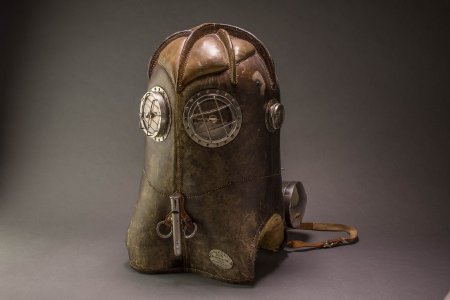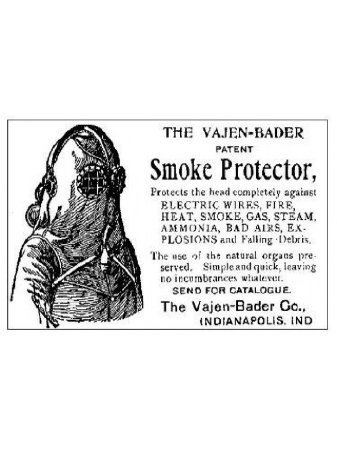Description:
Smoke Helmet Saves Lives
Where there is smoke there's fire. Conversely, where there is fire there's smoke. In most cases, fire is not the primary killer; rather it's the deadly smoke that comes with it. To minimize smoke inhalation, early rescue equipment tried to solve how users could bring fresh air with them and filter harmful smoke out of the air. In the 1890s, Willis C. Vajen, a hardware salesman, and William Bader, a piano repair man, teamed up to create the Vajen-Bader smoke helmet, an early respiration device designed to protect firefighters and rescue personnel in emergency situations.
The hand-stitched leather hood was specially treated to be both water and fire proof and thick enough to protect the wearer from heat. It is lined with soft wool for an added layer of protection. The eye and ear pieces are made out of mica and covered with wire mesh to keep large objects from damaging those sensitive areas. The eye pieces are also equipped with mini-wipers to clean off condensation. Since the hood covered the mouth, a whistle on the front was used to draw attention to the wearer. A canister on back would have been filled with compressed air meant to circulate around the helmet to the mouth. This month's featured artifact was used at the New England Fish Company in the freezers, presumably to protect the wearer from intense cold.
Ketchikan Museums, KM 98.2.18.2


